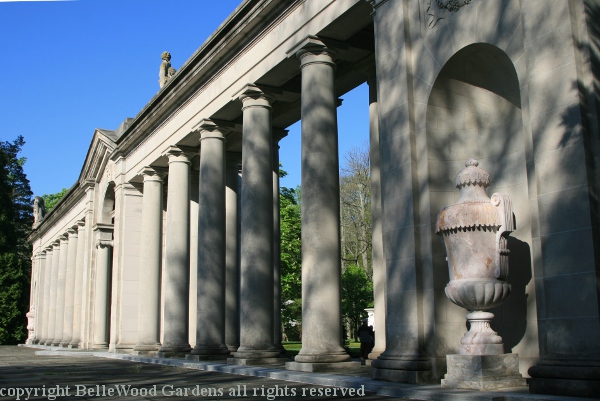
.
If you have any comments, observations, or questions about what you read here, remember you can always Contact Me
All content included on this site such as text, graphics and images is protected by U.S and international copyright law.
The compilation of all content on this site is the exclusive property of the site copyright holder.
Friday, 28 April 2017
It's the last Friday in April and feels warm enough for August. Forty-five Garden Writers Association members (from as far afield Georgia and Tennessee - they probably think the weather is fine) have registered for the Region II DuPont Triple Play event. We're going to Nemours, Mt Cuba Center, and Winterthur in Delaware, three estates of DuPont families now open to the public.
Nemours, his 300 acre country estate north of Wilmington, Delaware, was named by Alfred I. duPont for the town in France that was the site of his family's ancestral home. The estate's classical formal gardens, jardin à la française, are considered to be the largest, most developed French formal garden-style landscape park in North America. The design is patterned after the gardens of Versailles surrounding the Petit Trianon at the Château de Versailles. Their central axis extends a third of a mile from the mansion facade, paralleling the main avenue leading to the house. The grounds are beautifully landscaped with fountains and pools, statuary, and a pavilion surrounded by naturalized woodlands
Our group gathers at the visitors center, then board the trams that all visitors must take - private cars not allowed on the grounds. Most of us exit at the first stop.

The elegant colonnade designed by Thomas Hastings, was built in 1926 as a memorial
to Pierre Samuel du Pont de Nemours and his son Eleuthère Irénée du Pont.
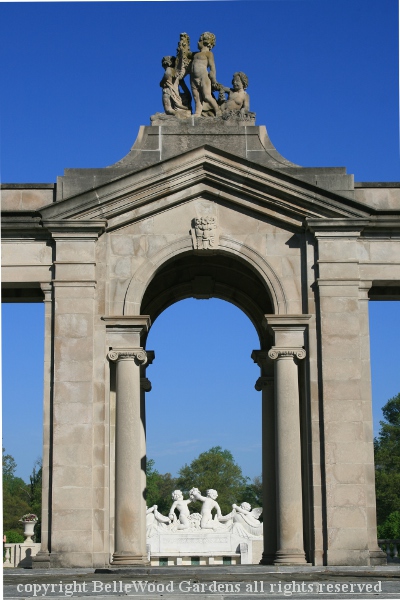
Architectural details with specific, formal names: Architrave. Entablature.
Arch. That's familiar. Here it frames a view of statuary in the Sunken Gardens.
It was Alfred Victor duPont (Alfred I. duPont's son) and Gabriel Massena (studied at the Paris Ecole des Beaux Arts, came to the United States, and was in practice with duPont) who oversaw the construction of the Sunken Gardens, which were built between 1928 and 1932. The main statuary group at the top and the side statues in the fountains are by French sculptor Charles Sarrabezolles. Carved from Carrara marble, brilliantly white in today's sunshine..
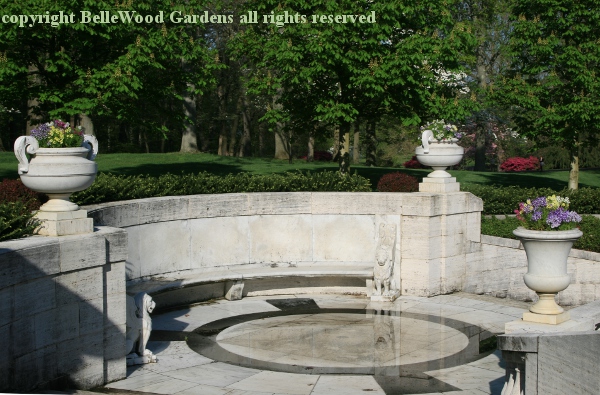
The walls and steps are Italian travertine.
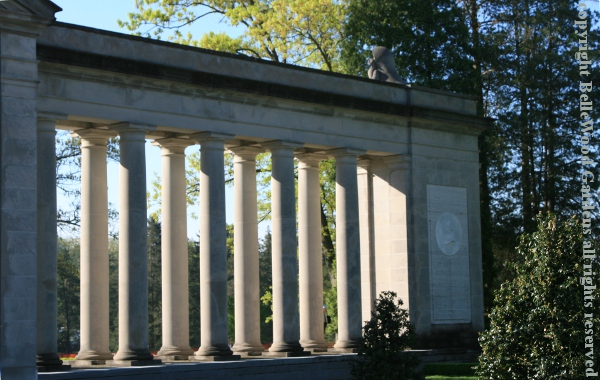
Morning sun on the colonnade.
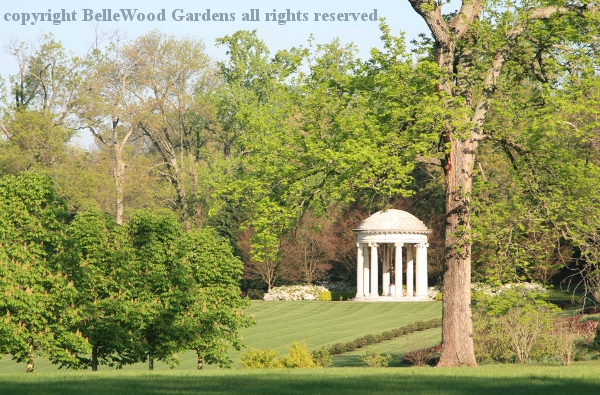
With the colonnade behind, up on a gentle rise is a classical folly, The Temple of Love.
Within, a life-sized statue of Diana the huntress, bow in one hand, arrow in the other.
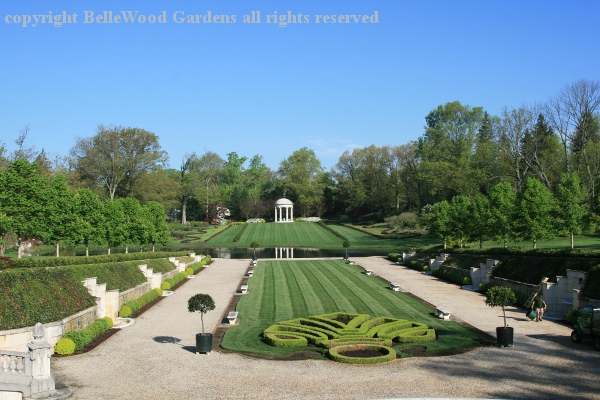
It is a superb focal point for this green garden that
plays with grade changes and water.
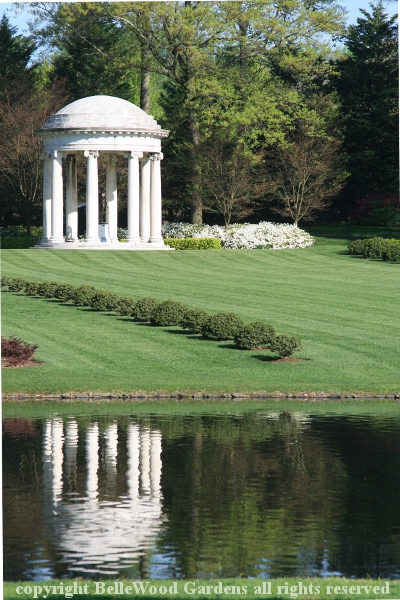
White azaleas complement the gleaming white stone.
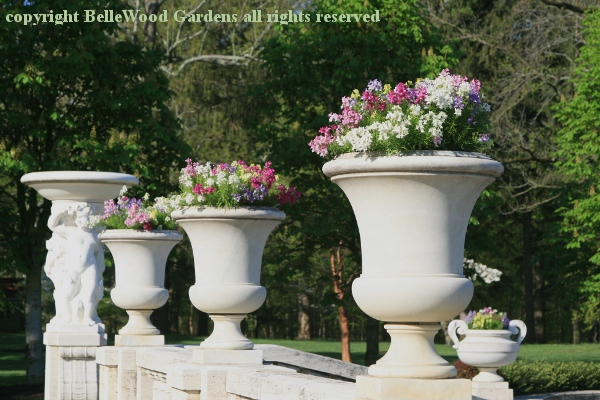
There are flowers. Today, the urns provide a regular march of spring bloom.

.
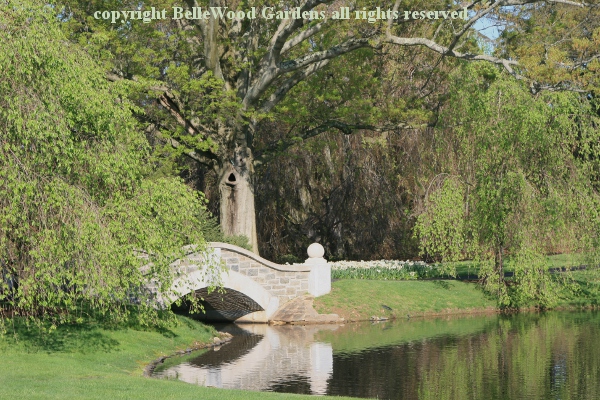
I decide to walk along the path and among the trees to reach the Temple. There are mature conifers - Norway and Oriental spruces, deciduous trees including lindens and beeches, Japanese maples. There are beds of daffodils, but they were beginning to go over. Wood hyacinths - what are they named today? Used to be Endymion, is it Hyacinthoides hispanica?
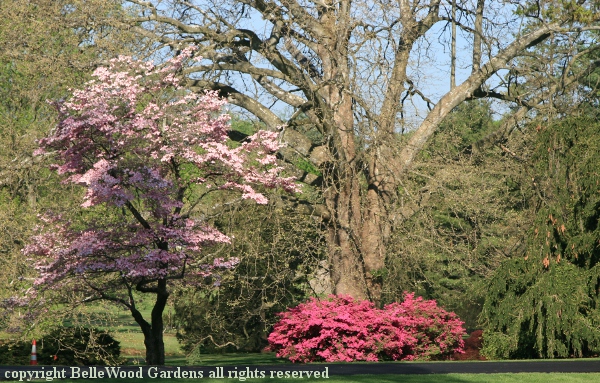
A pink flowering dogwood, and some fuchsia azaleas add color to the green scene.
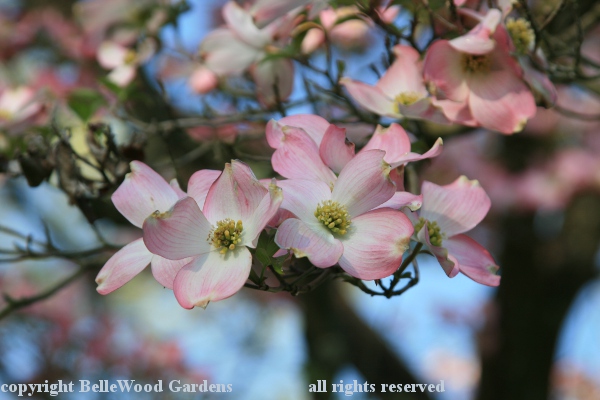
.
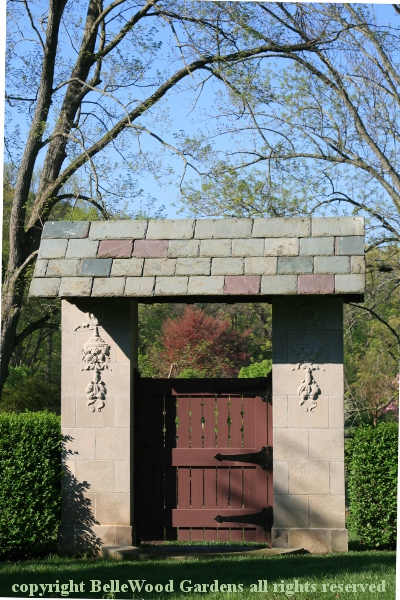
On my return, walking on the other side of the avenue, there is this little gate. Elsewhere it would seem semi-formal. Here, by comparison to the other architectural features it is rustic. What appealed to me was the somber russet hue of the gate, repeated in a few of the roof slates, and again, in the russet hues of a distant Japanese maple.
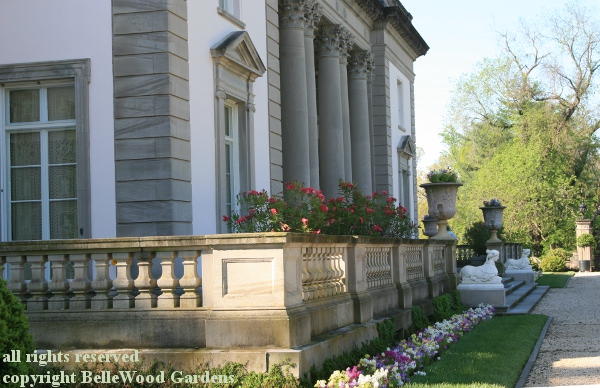
The house is so perfectly proportioned that its immense scale does not overwhelm.

Balance. All is graceful, attractive, appealing.
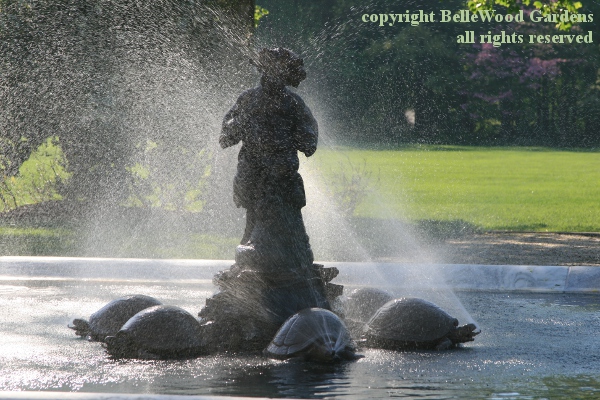
And playful moments too. Here, in a garden behind the house,
a fountain of a boy with turtles splashing a rainbow of fine droplets.
Back to April 2017
Back to the main Diary Page